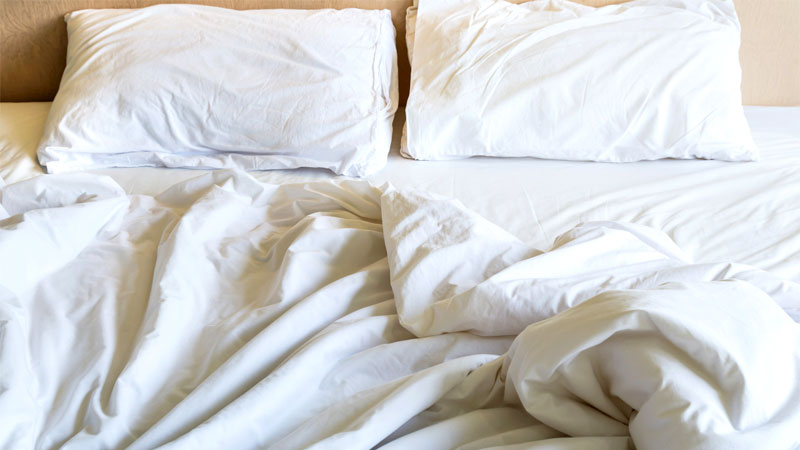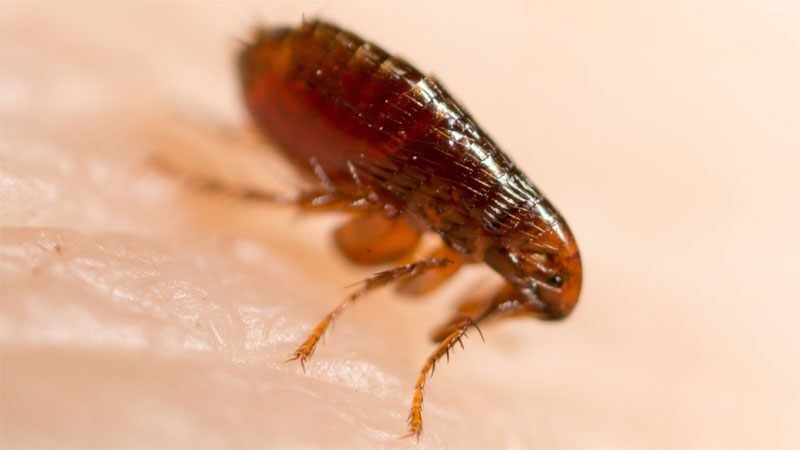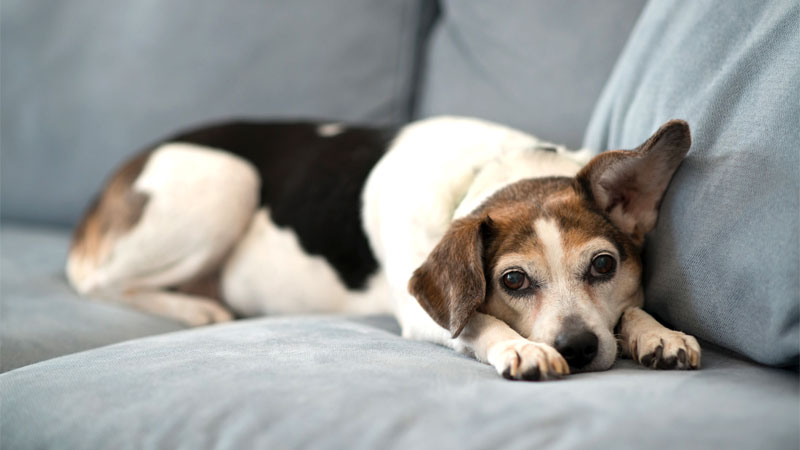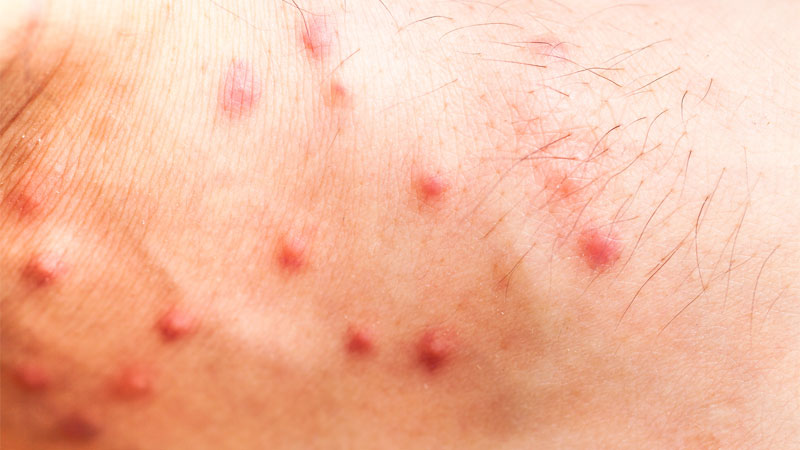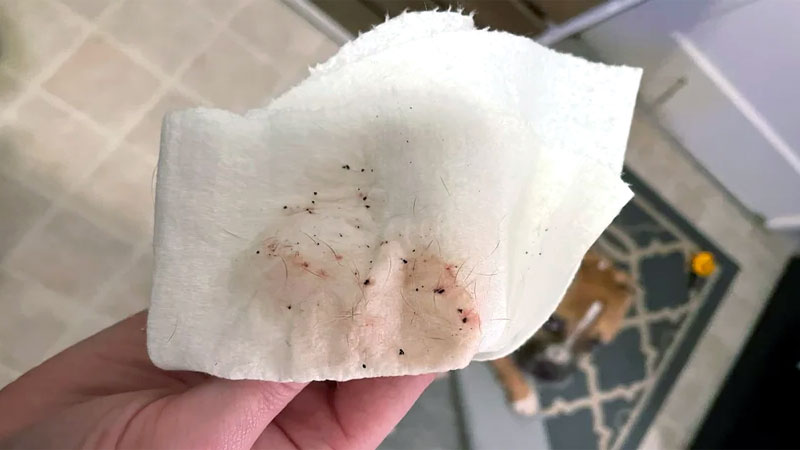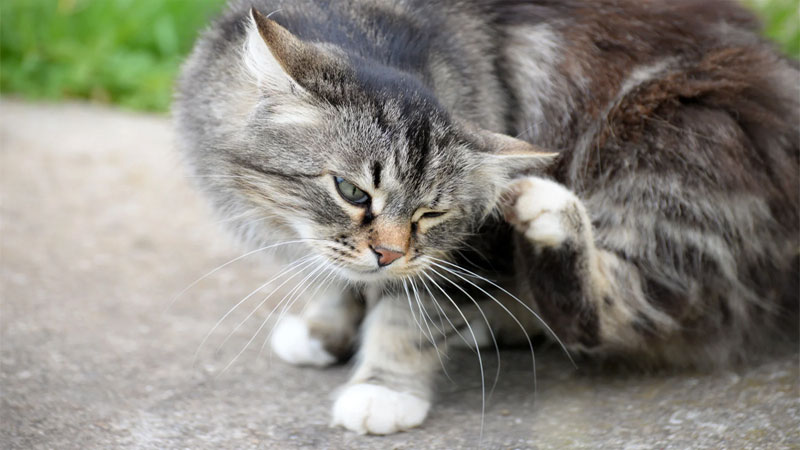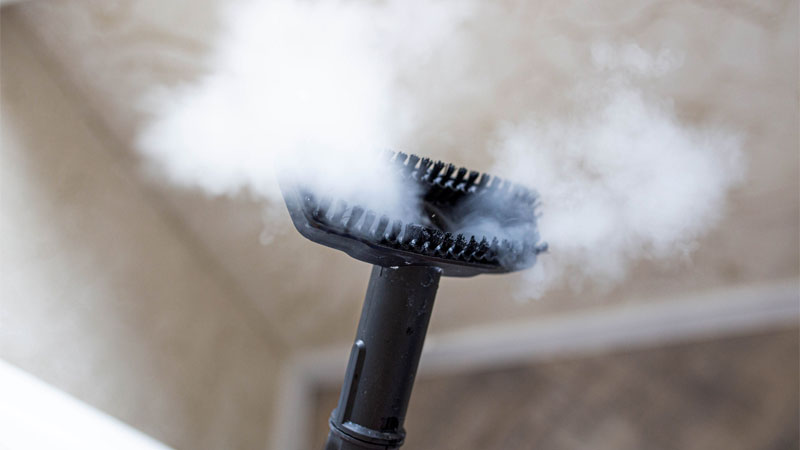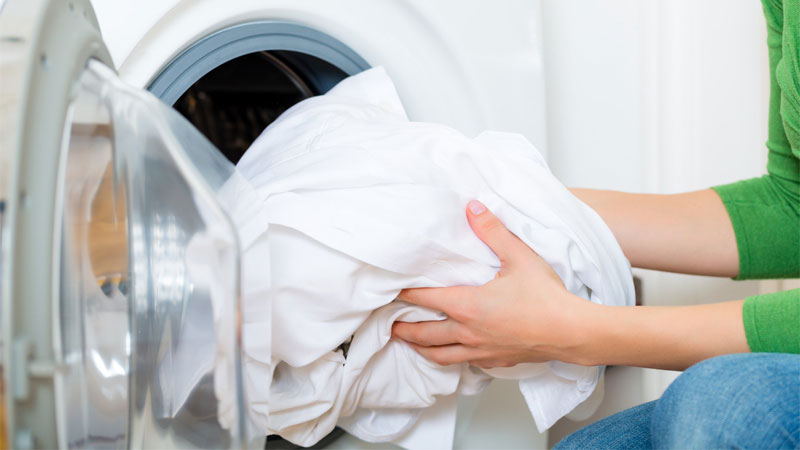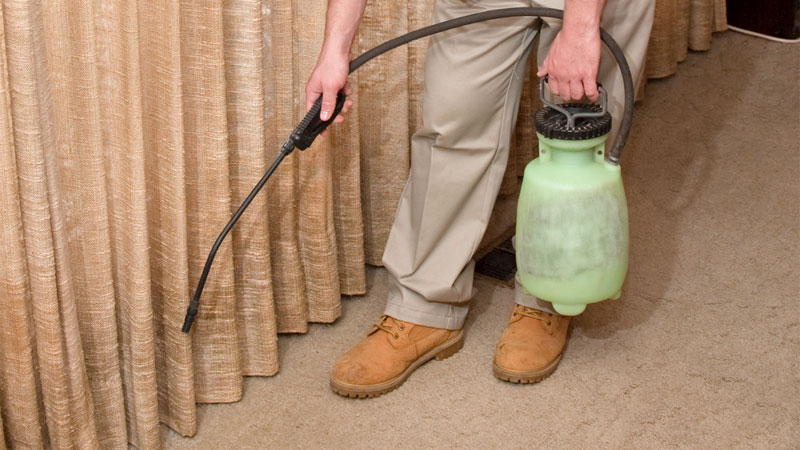We all know the old rhyme about going to bed and not getting bitten, but it really does need an update. There are a lot of critters inside your house that bite in the night, and some might be more surprising than others.
Case in point: When you wake up with bite marks, the last thing you’re probably expecting is a flea. Yet this annoying critter can and will make a midnight snack out of you under the right circumstances.
But how is this possible and how do you prevent it? Today, we’ll take a look at why there might be fleas in your bed, how to confirm their presence, and how to kick them out.
Fleas in Your Bed? The Greatest Flea Myth Busted!
Okay, so this section has a very clickbait-sounding title, but it’s quite true. There’s an old wives’ tale out there that claims fleas don’t like humans or even bite them.
Of course, anyone who’s had a flea infestation can attest quite the opposite. In fact, flea bites on humans are very common, yet the myth that fleas won’t attack humans persists to this day.
So just how (and why) would a flea be sharing your bed? Let’s start things off by looking at why fleas can end up in your bed in the first place. We can then use this information as a means to flea-proof your bed.
Fleas and Food
Part of the reason for the old wives’ tale (and why it persists) is because fleas are most often seen on specific hosts.
For example, the rat flea (of which there are three different species) primarily hung out on rats and were the primary carriers of Yersinia pestis – better known as bubonic plague. Cat fleas prefer cats, and dog fleas prefer dogs.
Please note our wording here… they PREFER certain critters. In reality, a cat flea is evolved to get the most nutrition from cat blood but can and will feed on dogs, rats, or even people when they’re hungry enough.
Meet the Human Flea
No, we’re not talking about the bassist from Red Hot Chili Peppers. Instead, we’re talking about a particular species of flea: Pulex irritans. Formerly known as the house flea but now renamed to the human flea, this species can be easily mistaken for other flea species unless you get a REALLY close look.
Human fleas are a living contradiction to the myth that fleas don’t attack humans. In fact, they’re adapted specifically towards humans and are more likely to get in your hair or clothing than other flea species.
This is also the most likely species to wind up in your bed because – just as with bed bug mentality – the best restaurant is the one where the food comes to you.
Why Other Fleas Might Visit Your Bed
There are two big reasons why you might have fleas in your bed that aren’t human fleas. The first one should be pretty obvious.
If your family includes cats or dogs and they like to lay on your bed, it’s easy for a flea to become dislodged and end up on your blankets and sheets. Once there, they’ll attack whatever gets close enough, including people.
The other reason is one that should also be obvious but is easy to overlook. Fleas prefer to spend their lives on a host. When there’s no host, a pupal flea can actually remain dormant for a year, suddenly emerging when you move into a new home or some other factor suggests food has arrived.
When this happens or a flea is unable to hitch a lift on its preferred host, it will seek out any nearby source of potential food. This can include a sleeping human.
Of course, if you’re in a different room and a flea seeks you out, you might inadvertently bring it with you to bed where it might stick around after it finishes its meal.
Remember that (with the exception of human fleas) most common adult fleas will only attack a human’s legs or feet unless the human is sitting or laying, and after a few quick bites, the flea will leave its momentary host.
How to Verify There Are Fleas in Your Bed
So now that it’s clear that fleas CAN and WILL get into your bed, let’s look at how to ensure that’s what you’re actually dealing with.
At roughly twice the size of a sesame seed, an adult flea can easily be confused with other pests of a similar shape or size. Even worse, you might not spot them directly. Here are a couple ways to verify the bug in your bed really is a flea.
Bite Patterns
If you’re laying down, a flea can bite just about anywhere, including under your clothing – one of many things that distinguish them from bed bug bites. Flea bites cause a near-instantaneous reaction that involves a small, itchy red bump that has a red halo.
If you or your kids get bitten and scratch, it can lead to a rash or other additional effects. Bite marks aren’t in a line as with bed bugs and may or may not appear in clusters, depending on the number and hunger level of the offending fleas.
Flea Dirt
When fleas feed, they leave tiny little black bits of frass known as flea dirt. Flea dirt resembles the frass left by bed bugs, and can be identified the same way.
Simply get a damp paper towel and sit it on top of the suspicious black granule. If it’s either bed bug or flea feces, it will dissolve, leaving a red stain on the paper towel.
Sadly, you won’t be able to tell if this is a sign of fleas or bed bugs, but you’ve at least narrowed down the list of suspects greatly and also ruled out the possibility that it’s just dirt or pepper.
Little Jumpers
This one requires you to get the tiniest glimpse of the suspect. Bed bugs and related species will scurry away, while a flea will try to jump to safety once it realizes you’ve spotted it.
Unless you’re briskly swiping at the bedsheets or hitting the bed, the sight of something tiny and black leaping into the air is a dead giveaway.
Pets (and Cats)
If you’re a pet owner (or live with a cat), that four-legged family member can be yet another good indicator. Have they been scratching a lot lately? Have you spotted fleas or flea dirt on them?
If you’ve answered yes to either of these and they like to get on your bed, they’ve probably brought company.
And while fleas prefer to remain on their host, that act of scratching (as well as similar actions) can dislodge a flea or two that fails to get back on the proverbial bus before it leaves. This one really requires no other signs of fleas in the bed beyond the knowledge of exposure.
How to Get Rid of Fleas in Your Bed
Now that we’ve verified you have fleas hanging around in the sheets, it’s time to get them out of there! Here are some simple tricks that actually work.
Steam Them
There’s nothing better than a good steam cleaner, especially if you invest the extra money for a high quality model. These get much higher temperatures, allowing you to literally boil fleas and other pests in most or all of their life stages.
Regular hot water just won’t suffice, but these cleaners will get much hotter than your tap and are safer than trying to use boiling water by hand.
The best part? Your bed will be much cleaner, thanks to the power of steam! Be sure to also use the steam cleaner on any pet bedding, which is where fleas are most likely to be if not on the pet itself.
Vacuum Them
If you’ve ever dealt with kids (or adults) snacking in bed, you’re probably already used to grabbing the handheld vacuum cleaner and giving the sheets a once-over. This can be a good practice to get into, especially with cleaning the mattress while washing your bed linens.
While this won’t necessarily catch adult fleas, it can let you suck up flea eggs and even flea larvae that might be hiding.
Wash Them Out
While we wouldn’t advise trying to drown a flea in soapy water, regularly washing your sheets can kill them if you’re lucky. The luck actually comes down to them not escaping while you’re taking your linens to the washing machine.
The water itself won’t kill the fleas, but if you’re doing white sheets, the bleach might do the trick. And even if they survive the washer, a full session in the dryer on high heat can finish off any survivors.
Brush Them Away
Okay, so this method is NOT a good idea to do in your bed, but if you pick a safe spot (such as the bathtub), it can be a great preventative.
Grab a flea comb and give your furry friends a thorough brushing out. The comb will dislodge everything from flea dirt and eggs to adults, allowing you to dispose of them (if you’re quick enough to stop the adults from jumping away, that is).
Bomb Them
This should be one of your last resorts. Flea bombs and foggers will kill some, but not all, life stages of fleas. It costs money and you will have to repeat the process to catch any hatched flea eggs.
However, for what it does, it does actually work fairly well. Just don’t expect miracles (which is why so many people are disappointed when they find the fleas returning because they didn’t finish the process).
You will need to bomb the whole house to keep fleas from simply hopping right back in, which means taking your furry family members somewhere (such as the local pet groomer for a flea bath).
You will also need to follow all instructions carefully and make sure there’s no food sitting out. Still, it’s cheaper than the cost of a flea exterminator and can be a great option if you have a heavy infestation.
Professional Help
Simply put, sometimes you need to call in a professional exterminator, if only for an evaluation. This can save time and money if the infestation is extensive.
Methods That WON’T Work
Before we end our train of thought, it’s important to cover some popular anti-flea methods that actually won’t work.
Collars
Back in the day, flea collars were a popular method of flea control – until the Hartz controversy began. This led to more research into how safe flea collars are.
Not only were some brands of flea collars found to be dangerous to cats and dogs, but their effectiveness was largely debunked. Even if you purchase a collar that’s safe for your furry friend, it won’t do much to protect them.
Instead, flea baths and other flea treatments such as flea powder are a far better bet (although their effectiveness can also sometimes be called into question under certain circumstances).
Homemade Sprays
As much as we want to love them, homemade bug sprays are rarely effective. The reason is simple. You have to hit the critter directly and thoroughly soak them.
If you’ve got a flea in bed with you, it’s probably a female flea looking for a food source, and she’ll be well aware of how exposed she is. She’ll try to avoid light sources and leap away at the slightest disturbance, meaning you have next to zero chance of hitting her.
Unfortunately, this means sprays made from rubbing alcohol, bleach, or other potential killers will probably not work. However, you CAN use sprays made with lemon juice or essential oils as potential repellent sprays.
Your mileage will vary, but there is some anecdotal evidence of success (likely by overpowering the scent of blood so the flea is less likely to hang around).
- How to Get Rid of Hawks - March 8, 2024
- How to Get Rid of Pill Bugs (Rolly Pollies) - March 1, 2024
- How to Get Rid of Groundhogs (Woodchucks) - February 5, 2024

